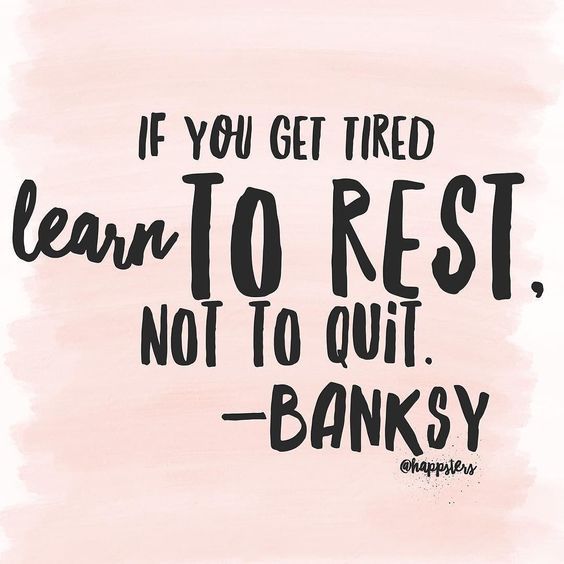Intrinsic Motivation | "How To" Series
Welcome to our How To Series! We have got lots of “How To” ideas to share with all of you, and to kick it off, we are starting with “How to Get Motivated.” This is just the beginning. We hope this series will be informative, fun, practical, and inspirational. We’ll try to cover all kinds of things that will interest all of you, no matter where in the world you live or what in the world you like to do. Next on the agenda: a killer hot fudge recipe that I’ve been wanting to share. Look for it--I promise you won’t be disappointed. Until then, prepare to confront all your motivational issues and take charge!
How To Get Motivated
“What is wrong with me?” a client will ask. “I want to feel motivated but I just don’t.”
That, inevitably, brings up feelings of shame, self-judgement, and failure. “I must be depressed,” they might offer, looking at me for confirmation. “Are you?” I’ll ask, which usually then spurs a variety of sputtered answers.
“I don’t know.”
“Maybe”
“You’re the therapist. Aren’t you supposed to figure it out?”
Here’s a Confessions of the Professions disclosure: I don’t know why someone is unmotivated, even though I am their therapist. What I do know is that their lack of motivation (or anything else they are feeling or not feeling) means something unique to them, and my job is to engage with them in a meaningful process so they can figure it out for themselves.
There are two primary types of motivation: intrinsic and extrinsic.
According to Psych Central, an independent mental health social network, intrinsic motivation is “based on a person’s natural inclinations in terms of what’s important or enjoyable to him.” Intrinsic motivation is self-driven, an internal drive that takes little effort or coaxing. A person will perform a certain task simply because she enjoys doing it. Intrinsic motivation also taps into a person’s sense of self and purpose. Intrinsic rewards are individualized. For example, a person who runs marathons usually is not doing it to earn money, although top athletes sometimes do. They might do it for the satisfaction (emotional), physical (strong body) and endorphin rush. For other people, running 26.2 miles (42.195 km) would be punishment, not a reward.
Extrinsic motivation is based on receiving a certain reward from an external source, like a person or place.Think promotions, monetary rewards, and school grades. The difference here is that once the source of control is removed, so usually is the motivation.
Which is better? Intrinsic or Extrinsic Motivation?
Neither is better, they’re just different, like people. Your motivation may change day to day; sometimes, hour to hour and even minute to minute. It will depend on all kinds of factors: circumstances, temperament, priorities, or physical and emotional health. You certainly won’t be intrinsically motivated to go to your job if you have the flu and a temperature of 104 degrees, but you will be intrinsically motivated to stay in bed and drink hot tea, hanging on to the belief that taking care of yourself will eventually lead to healing and feeling good again.
All of us will have times in our lives when we are motivated by external rewards and times when we are motivated by internal rewards. The key is to be aware of what is most important to you depending on your own unique situation.
Take, for example, money. Some people will work at a job they don’t enjoy because their paycheck offers them enough of an extrinsic reward that makes it worth it to them, while someone else would rather earn a smaller paycheck and do work that is more meaningful to them.
Neither one is better.
The truth is, all of us will be motivated by both reward systems throughout our lives, depending on situations, values, needs, and wants. What is more important is understanding and knowing yourself well enough to make decisions that are right for you.
That said, here are a few practical tips to increase motivation, whether intrinsic or extrinsic. The truth is, you can change a negative undercurrent coursing through your psyche through self awareness and conscious choices that will, undoubtedly, increase positive motivation (both intrinsic and extrinsic) for a healthier, happier life. Laura C. Meyer, a mindfulness instructor at The University of Virginia School of Medicine suggests these five steps:
1. Educate yourself.
Know that the same human brain that dumps adrenaline has the same to potential to dump happy hormones such as serotonin, endorphins, and dopamine.
Serotonin gets released when you feel significant and important and have a sense of internal satisfaction. Endorphins (endogenous morphine) are the body’s natural opiates designed to relieve stress and enhance pleasure. They get released with certain foods, social connections, and light to moderate exercise. Dopamine motivates us to take action toward goals and desires, and gives us pleasure when achieving them. But you have to actually taking some action to release dopamine, even in small increment
2. Become aware of perceptions.
Simply observe thoughts while doing your small increments. Do you perceive the event as dreadful, painful, and boring? If so, you perceive the event as an emotional danger zone, and of course you procrastinate. Your brain also has potential to change thoughts toward perceived mundane activities which make up about 80 percent of daily life — such as eating, showering, cleaning, driving, and walking.
3. Be truthful.
Draw into the truth of the actual experience, not your creative stories about how dreadful it is. When you wash the dishes, feel the warm water. See the suds. Smell the dish soap. Pick up a cup and plate. Lift the cup into the drain board. Clean the cup. Is this really so dreadful?
When you pay bills, go to the bank website. Look at your balance. Open an envelope. See the amount owed. Pick up the checkbook. Reach for a pen. Write letters and numbers. Affix a stamp to the envelope. Walk to the mailbox. Or, lift your fingers a few times to pay online.
4. Tap into gratitude to finalize new perceptions, and know that there is more truth.
You are glad to have children who track mud in the house. You are glad to have a house to clean, to pay for, and for a cell phone bill that keeps you closer to friends and family. You are grateful to have a house that friends want to come to, and glad you have friends. You are glad to have the food that you are cleaning off dishes.
You are glad that you have a body that hugs and kisses, and is able to speak, see, and hear words of gratitude. You are grateful to have all these things, and you are motivated to take care of and appreciate them.
Give these tips a try. I’m pretty sure they can help. Yes, sometimes a lack of motivation points to something more significant, like depression or anxiety, and needs to be ruled out. It can be a chicken-and-the-egg question: does depression or anxiety cause one to be unmotivated, or does a lack of motivation cause depression or anxiety? It could be either, and something you may never really figure out. Working with a mental health therapist might be necessary and helpful, and there is never any shame for asking for help. However, the most important thing to keep in mind is that motivation is something we are already wired to have. It will ebb and flow, depending on what’s going on in our lives or what are values or priorities are, or what our in this particular situation.
What I do know for sure is that judging yourself is a motivation-killer! Instead, take a more self-empathetic approach. There are most likely good reasons that you are suffering from a motivation problem. Remember that it is normal for everyone to sometimes feel unmotivated. If you can’t figure it out yourself, ask for help. A good therapist, life coach or best friend can sometimes be a lifeline. The point is, don’t stay silent or suffer unnecessarily. Overcoming a motivational problem may not be a quick fix, but you won’t regret the effort.





